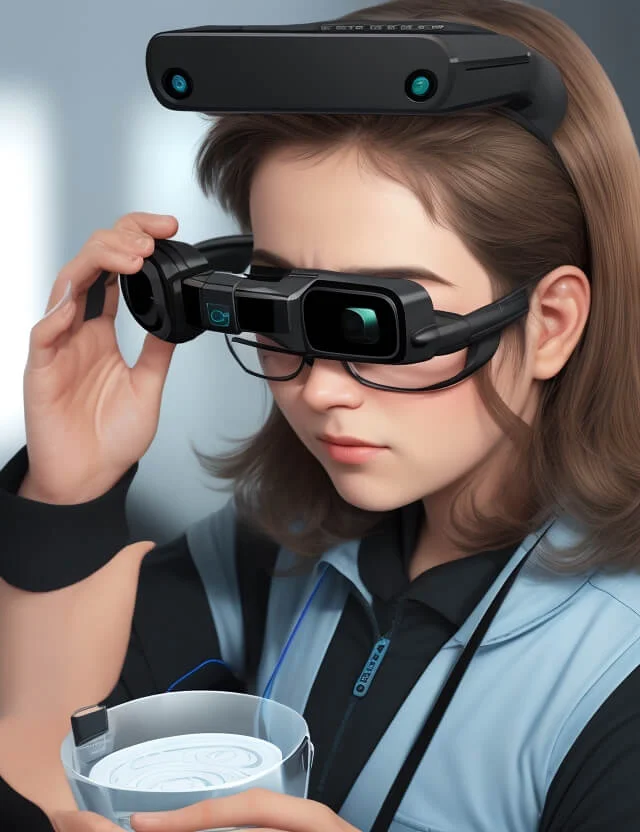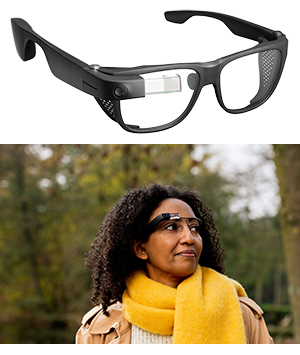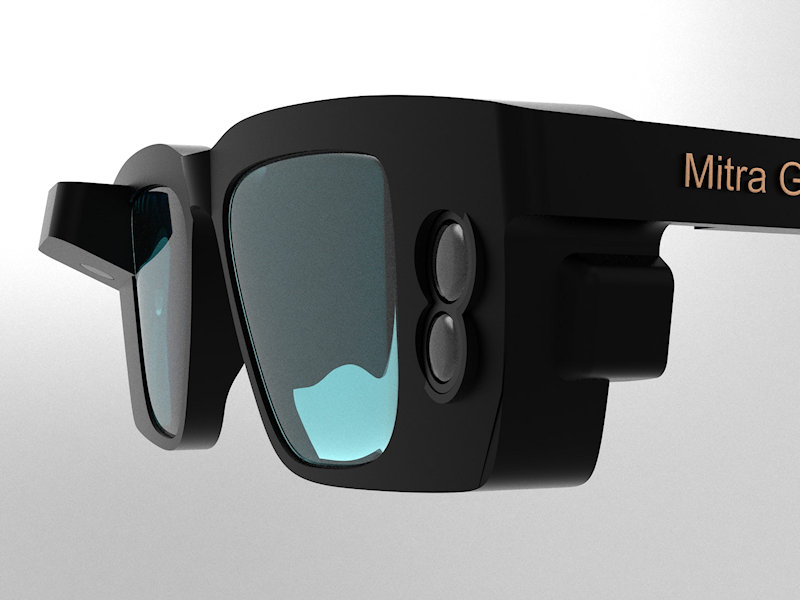Enhancing Ease Of Access Through Assistive Modern Technology for the Blind
The assimilation of assistive innovation for the blind represents a pivotal innovation in access, essentially altering just how people navigate their settings and engage with society. From display visitors to cutting-edge clever walking sticks, these devices not just enhance self-reliance but additionally promote inclusivity in numerous balls of life. As we explore the varied sorts of assistive tools and their concrete influence on everyday living, it becomes vital to take a look at how recurring technological innovations are reshaping the landscape of assistance for the blind community. What effects do these advancements hold for the future of access?
Summary of Assistive Modern Technology
Assistive innovation refers to a variety of tools and software developed to boost the capacities of people with disabilities, including those who are aesthetically damaged or blind. This modern technology plays a vital duty in advertising freedom and improving the quality of life for users. By offering alternate techniques for accessing info and doing day-to-day jobs, assistive modern technology encourages people to browse their environments better.
The development and execution of assistive modern technology welcome a selection of concepts focused on promoting ease of access. These principles include user-centered design, which focuses on the demands and choices of the individual, and the integration of technology right into day-to-day tasks. Such developments guarantee that assistive devices are not just useful however very easy and likewise intuitive to make use of.
In addition, assistive innovation includes a varied range of services, from low-tech options like magnifiers to sophisticated advancements such as screen viewers and Braille screens. The continuous evolution of this area is driven by the need to resolve the special challenges encountered by people with visual disabilities (Wearable technology for low vision). As technology proceeds to advance, the potential for boosting access and advertising inclusivity remains promising, ultimately adding to a more fair culture

Types of Assistive Instruments
Many sorts of assistive gadgets are available to sustain people who are blind or aesthetically impaired, each designed to attend to specific requirements and challenges. These gadgets can be generally categorized right into 3 major kinds: low-tech, mid-tech, and modern remedies.
Low-tech devices include things such as magnifiers, Braille labels, and tactile maps. These are fairly simple tools that improve the customer's ability to engage with their setting without requiring complicated modern technology.
Mid-tech devices typically include a lot more sophisticated functions, such as digital magnifiers and mobile Braille note-takers. These gadgets can use capabilities like speech result, enabling individuals to gain access to info much more effectively.

Effect On Daily Living
The availability of numerous assistive gadgets considerably boosts the lifestyle for individuals that are aesthetically impaired or blind, influencing their everyday living in profound means. By integrating modern technologies such as display readers, Braille presents, and audio description solutions into their routines, customers get greater freedom and independence. These devices help with accessibility to information, making it possible for individuals to perform day-to-day tasks, such as reviewing emails, browsing public spaces, and appreciating media content.
In addition, assistive devices encourage people to involve more completely in social communications and neighborhood tasks. The ability to use smartphones furnished with accessibility functions enables seamless communication and link with others. This connectivity fosters a feeling of belonging and lowers feelings of isolation.
In specialist settings, assistive innovation sustains performance by allowing individuals to total job tasks effectively. Devices like voice recognition software application and specialized magnifying tools enable individuals to join the labor force on equal footing with their sighted peers.

Developments in Modern Technology
Current technical advancements have substantially changed the landscape of devices like this readily available for individuals who are blind or aesthetically damaged. The assimilation of man-made intelligence (AI) and artificial intelligence has actually generated applications that boost navigating and things acknowledgment. For instance, smart device applications can currently make use of AI to recognize and explain environments in real-time, supplying individuals with useful contextual info.
In addition, innovations in haptic modern technology have actually brought about the growth of clever walking canes geared up with sensors that discover challenges and supply tactile feedback. This encourages customers to browse their environment with raised self-confidence and independence. Additionally, innovations in text-to-speech software and braille display screens have improved the access of electronic content, permitting smooth interaction with numerous media.
Wearable modern technologies, such as smart glasses, are likewise making strides in aiding aesthetic disability. As modern technology continues to advance, the capacity for also more transformative tools continues to be on the perspective.
Future Trends and Innovations
As innovation swiftly progresses, the future of assistive devices for people who are blind holds immense promise. Technologies go to the website in fabricated intelligence (AI) and machine learning are positioned to transform the way blind individuals communicate with their environments. AI-driven applications are being developed to boost item acknowledgment, enabling customers to determine and browse their surroundings with better ease and precision.
Moreover, innovations in haptic feedback innovation are enabling the development of tactile maps and navigation help that provide real-time info through touch. These innovations not just improve flexibility but likewise foster freedom. Furthermore, wearable gadgets equipped with enhanced fact (AR) attributes are emerging, using customers visual info with sound descriptions, thus connecting the void between the physical and digital globes.
Furthermore, the integration of wise home modern technology offers new opportunities for access, permitting individuals to control their living atmospheres with voice commands or smart device applications. As cooperation in between technology developers and the blind community continues, the concentrate on user-centered style will make sure that future technologies are customized to fulfill the one-of-a-kind needs of this population (Wearable technology for low vision). The trajectory of assistive technology promises a more empowering and inclusive future for individuals that are blind
Conclusion
In final thought, assistive modern technology plays an essential function in enhancing accessibility for people with visual impairments. Continual developments in technology and user-centered layout guarantee that these devices cater effectively to the one-of-a-kind requirements of the blind area.
The combination of assistive technology for the blind stands for a pivotal innovation in availability, fundamentally changing exactly how individuals browse their atmospheres and involve with society.Assistive innovation refers to a range of gadgets and software created to boost the abilities of people with disabilities, consisting of those that are aesthetically impaired or blind. Wearable technology for low vision.As innovation swiftly advances, the future of assistive devices for people who are blind holds enormous assurance. The trajectory of assistive technology guarantees an extra inclusive and empowering future for people that are blind
In conclusion, assistive innovation plays a critical role in improving availability for people with visual impairments.